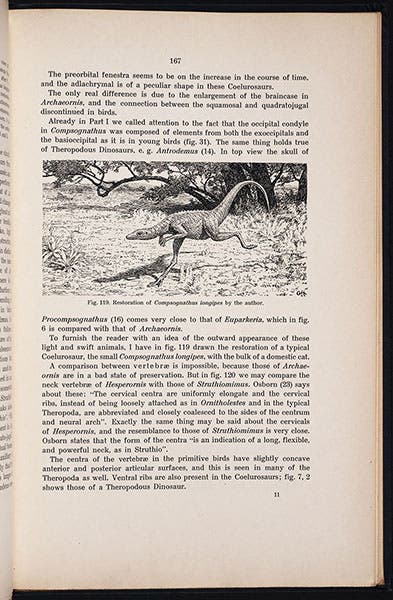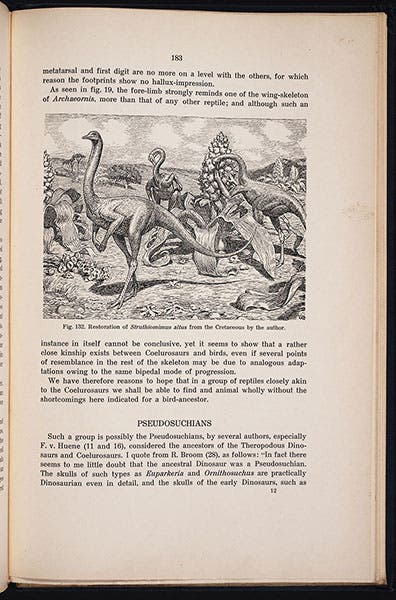Scientist of the Day - Gerhard Heilmann
Gerhard Heilmann, a Danish artist and amateur student of fossil birds, was born June 25, 1859. Heilmann earned his living as a graphic artist, but he was interested in birds, bird anatomy, and especially bird origins, and he read about the prevailing idea, first proposed by Thomas H. Huxley, that birds were descended from dinosaurs. Heilmann objected to Huxley’s thesis because the birdlike dinosaurs (he thought) lacked a clavicle or collarbone, something present in all birds. Heilmann wrote five long of articles in Danish, published in a Danish ornithological journal, proposing his own ideas about bird origins and containing his own drawings, but he was shunned by Danish ornithologists, who regarded him as an amateur and an upstart. They also objected strongly to his seemingly rude dismissal of several prominent Danish zoologists.
Having received some encouragement from English-speaking zoologists, especially from D’Arcy Wentworth Thompson in Scotland, Heilmann distilled and translated his Danish articles into an English publication, The Origin of Birds (1926). It was a great success, primarily because of its striking illustrations. Heilmann wielded a brilliant pencil, and there are 142 drawings in the book, all by Heilmann himself. Most depict birds or bird anatomy, or proposed bird ancestors, but some of the drawings show dinosaurs, and today, we focus on these.
We reproduce four pages from his book, two of those with added details. They depict, in order, a running Compsognathus (first and fourth images), a pair of Iguanodon running (third image), a herd of Struthiominus strutting (fifth image), and a pack of Gorgosaurus (now Albertosaurus) gorging (sixth and seventh images).
For 1926, these images are remarkable. Not only are they beautifully rendered, but they present dinosaurs as lively, keen-eyed, and uncommonly swift. Heilmann’s portrayal of dinosaurs as intelligent and active, a view he shared with the American artist Charles Knight, was uncommon in the 1920s, and disappeared almost completely in the 1940s, replaced by the dull, plodding behemoths found in the famous Rudolph Zallinger mural, The Age of Reptiles, at the Peabody Museum at Yale. But in the 1970s, the clever, agile dinosaur re-emerged with a new respectability, and if you want to see Heilmann-style dinosaurs in action, you need look no further that the 1993 film, Jurassic Park.
We featured Heilmann’s book in our 1996 exhibition, Paper Dinosaurs, although at the time we had only the 1927 U.S. edition in the Library. We have since acquired the 1926 London first edition, which is the source for the images in today’s post.
Dr. William B. Ashworth, Jr., Consultant for the History of Science, Linda Hall Library and Associate Professor emeritus, Department of History, University of Missouri-Kansas City. Comments or corrections are welcome; please direct to ashworthw@umkc.edu.












